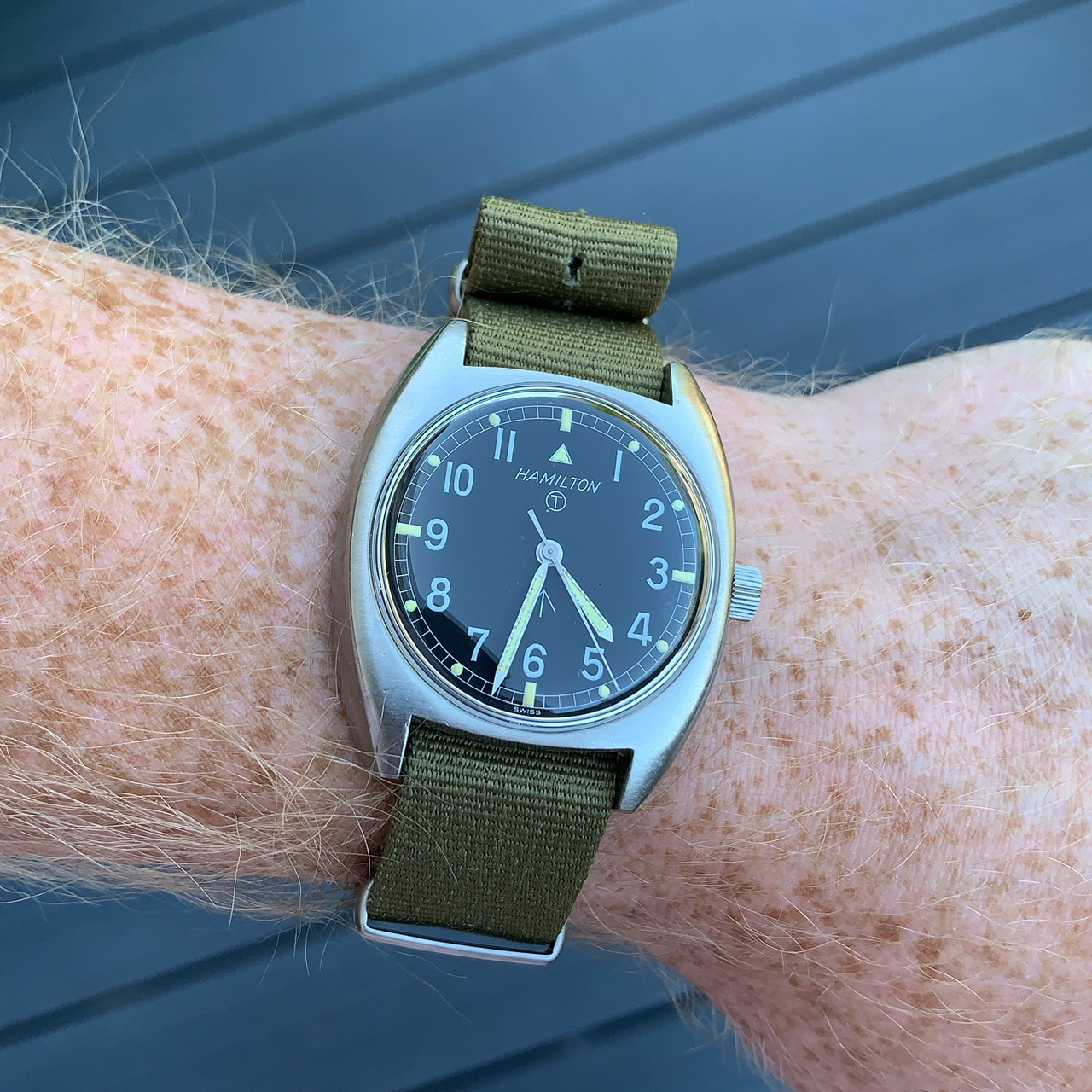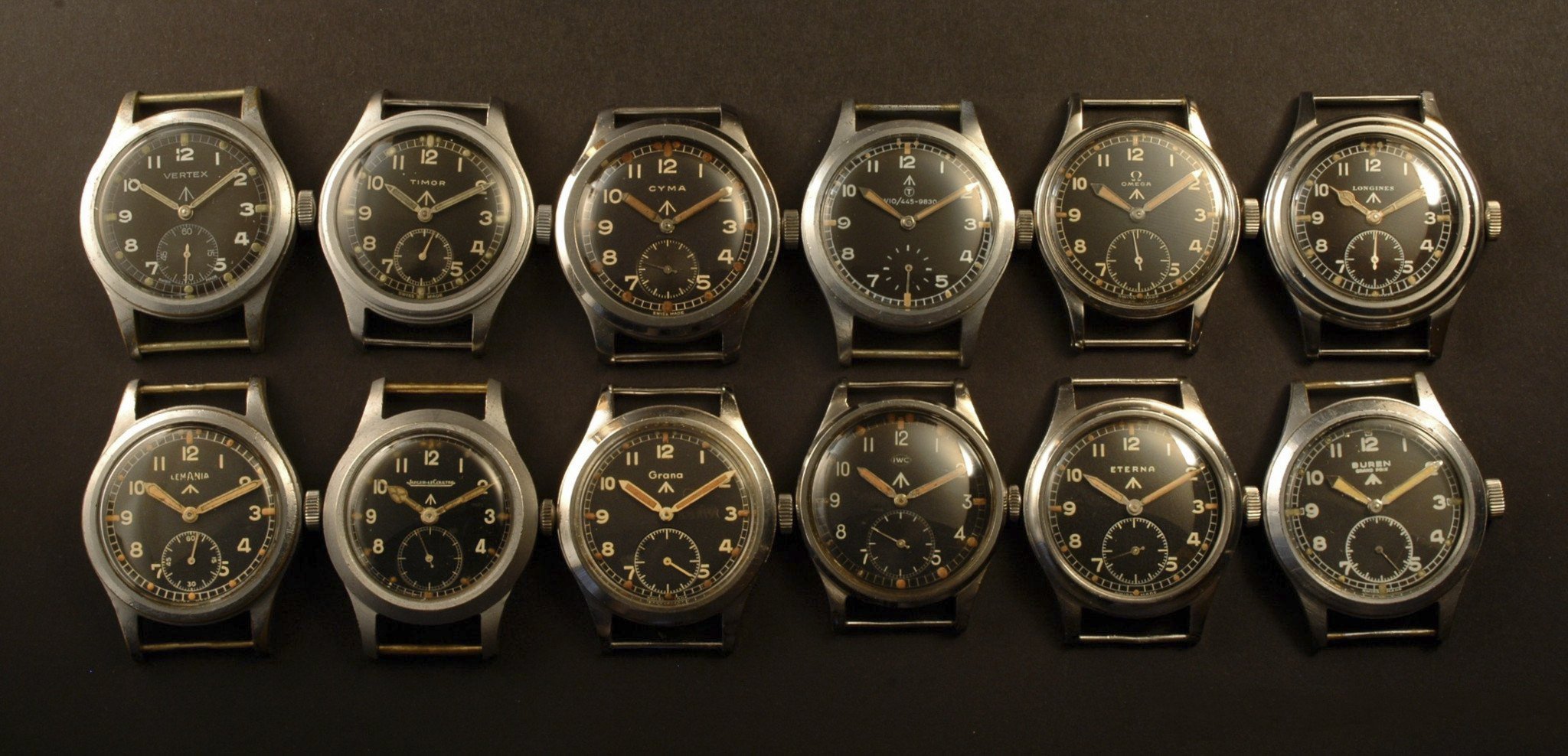British Military Watches - A complete history of British Armed Forces watches (and all associated squadrons/units/regiments etc.) could fill several volumes. Here we will take some of the most famous watches worn by the British Army.
Nowadays, military watches are very popular for their ridiculous layout and tough construction. We often forget that it is rooted in real military conflict. In fact, the appearance of watches alone may have had a basis in war. The British Army is one of the most famous military forces in the entire world. The historical image of British Tommies romanticizes the army's reputation, which, throughout its history, fluctuates. From the days of the Empire to modern peacekeeping missions, British soldiers are recognizable figures around the world. Considered brave, proud, and loyal. And strapped to their wrists, a simple stick, very legible, with battle scars. Let's find out more about the watches that kept time for the British Army in the past...
British Military Watches

The watch was once put in the pocket. No one knows for sure when they migrate to the wrist. Cartier is often credited with commercializing watches for men, but certainly examples of men wearing their watches existed long before Alberto Santos-Dumont took to the skies above Paris with the world's first pilot's watch on his body.
Hamilton 6bb \
During the Second Boer War (1899-1902) soldiers modified their pocket watches to be worn on their wrists. They do this by welding a simple wire lug to the case and then attaching a leather strap (like a belt). This period is one of the first written evidences of men wearing watches. This "sliced watch" style was defined by its large pocket-sized watch case, clear, cut-off dial (often with a second sub-dial at 6 o'clock) and thin, threaded wire, still available today. For an example of a modern interpretation of this watch, see Bell & Ross' Guynemer Limited Edition below.
By the time World War I rolled around, men's watches had not yet become mainstream fare. It wasn't until the outbreak of the world's first major conflict that companies began to recognize the needs of a soldier. Swiss movements were assembled in English-made cases (by companies such as Dennison). These cases meet the requirements set by the British Army. The snap-on back cover is out. The threaded case is in.
This is when things get really serious. The show is, now, ordinary. The techniques surrounding their creation have been highly refined. In addition, the British Army had more demands than ever before.
When the war started, the troops needed a watch. At least 17 and as many as 22 companies were commissioned to produce watches after the A.T.P. (Military Trade Model) design. These watches are all three quite similar handles. The case is made of stainless steel and has an easy-to-grip crown, a luminous display and a colored dial (in stark contrast to most of the radium-luminous watches with black dials during World War I).
Fs: Pulsar Military Watch 6645/99 G10 2004 Ministry Of Defence
Brands such as Longines, Omega, and Jaeger-LeCoultre donated watches to different parts of the British military throughout the end of the war. But there is more to come. Just before the battle ended, the most famous donation of watches finally reached the army.
Delivered in 1945, the W.W.W. (Watch. Wrist. Waterproof.) The watch is produced by 12 companies (all using Swiss-made movements). These companies later became known as "The Dirty Dozen". This is probably the most collectible watch ever worn by the British Army. If you are looking for one for a good price, you would be wise to choose this one. The brands in question are Omega, Vertex, Grana, Cyma, Eterna, Lemania, Longines, Jaeger Le-Coultre, IWC, Record, Buren and Timor.
Of the 12, the Grana is probably the most sought after (only around 1,000-1,500 pieces were ever delivered). The second rarest pieces are the Longines and Eterna (with an estimated 5,000 pieces each delivered). IWC (6,000 est.) and Lemania (8,000 est. and my personal favorite aesthetic) round out the models with production below 10,000. Good news for Speedy fans - Omega and Record both produced around 25,000 watches each. This means Omega is actually one of the most readily available.

Keep your eyes peeled for Enicar watches from the same era in the same style. Enicar was actually commissioned to produce the same product by the British Army. Strangely, there is no evidence that any samples were ever made. If just one slips out of the factory, we'll be dealing with a baker's dozen. It is, of all the military watches in history, the closest thing to the Holy Grail I've heard of (by which I mean no one knows if it exists, and, if it does, its value is incomparable).
Owner Review: Hamilton 1973 W10 British Army Issue
Before chronographs came along, the Smiths W-10 was king. And the most interesting thing about it? do In. England. And that includes movement. Measuring 35mm, it is certainly small by today's standards (and even by the standards of early military watches). But it makes it bigger because of the width of the dial. What's more, it's probably the watch closest to the idea of a traditional military watch on this list.
In the late 70s, Hamilton, CWC, Newmark, and Precista produced some very nice double pusher chronographs for the Army. The Bicompax, double pusher chronograph produced by CWC at this time is, to me, one of the most beautiful military watches ever made. Fortunately, modern versions are available from companies today.
The G10 is an iconic watch. Not only is it something interesting, but its codename has a greater meaning in the world of watches. The NATO strap should officially be known as G1098. This is their original stock code. The CWC G10, first released in 1980, was fitted to the G1098 (and had a fixed spring bar). Other brands also make these inexpensive, disposable quartz watches (Precista and Pulsar to name two).
They are also quite collectible thanks to the different differences between different generations. The earlier models were fat little things called "fat boys". They get this unfortunate nickname as a result of their thick cases. The second wave was slightly thinner, and the final model was definitely thinner in profile. The different codes used on the cool back, occupied batteries can drive collectors into a frenzy.
Hamilton W10 Raf British Army Issued Watch
While British Service personnel wear a variety of watches depending on their specific role in the force, the British Army "brand" has had an official partnership with Casio this year. The new limited edition British Army Mudmaster may not be the most practical-sized watch, but its versatility makes it a very useful tool in the field. I have the latest unlimited Mudmaster. It has almost the same functionality and I can attest to its utility and usefulness. So it certainly looks like a good choice for the Army's "official watch" in 2020. Learn more here. Ahh, the rare world of military watches. Often developed under direct contract from national armed forces, these watches are designed to keep time in harsh physical conditions and often incorporate special features that, over time, find their way into watches intended for the civilian market. (We say "
Made" because today, specifications and government contracts for watches are less common, and even special operators are more likely to wear an off-the-shelf G-Shock than a mil-spec Rolex Submariner).
This content is imported from a third party. You may be able to find the same content in a different format, or you may be able to find more information, on their website.

Military watches are a seemingly endless source of fascination for civilian watch collectors, and for good reason - these are watches designed and built to grace the wrists of servicemen and women, divers, explosive ordnance disposal personnel, special operators with people another. who always risked their lives in battle. There are very few extraneous design elements in a military watch - what is there is only what is really needed to do the job, and there is a special kind of beauty in this type of product.
Sold British Army Issued Hamilton W10 Military Watch Falklands Conflict
What qualities are required to make a military watch ready for a mission? Not necessarily a hard-coded list of attributes, but these features make a good jumping-off point:
Durability: The casing should be machined in a material that is highly resistant to impact, corrosion and harsh environmental conditions. Before the common use of stainless steel (or during wartime shortages), nickel or sterling silver plated base metals were used, whereas today, plastics are increasingly common in addition to steel.
Luminosity: Without some kind of luminous compound on the dial (or backlight), it is impossible to read the time in low light conditions, so military watches must have some kind of lighting system. (Interestingly, this is one of the reasons why watches worn by soldiers must always be covered, to prevent enemies from seeing the glowing dial from afar.)
Reliability: A military watch, if it has a mechanism
Sold Price: Vintage Omega Ww2 British Military Watch Reference 2292 Circa 1944
Omega british military watches, british military watches ww2, current british military watches, british military service records, british military issue watches, british military watches for sale, military watches, vintage british military watches, british watches, british military, british microbrand watches, british watches military
0 Comments